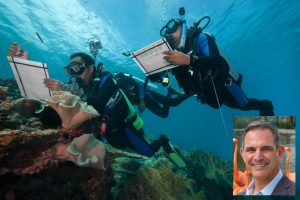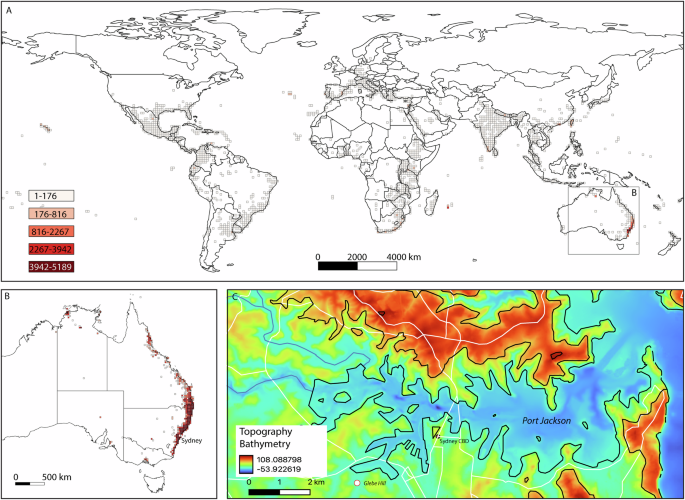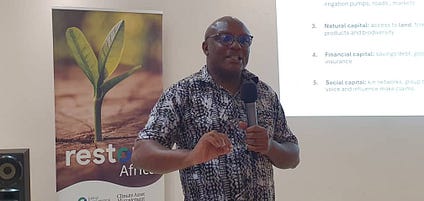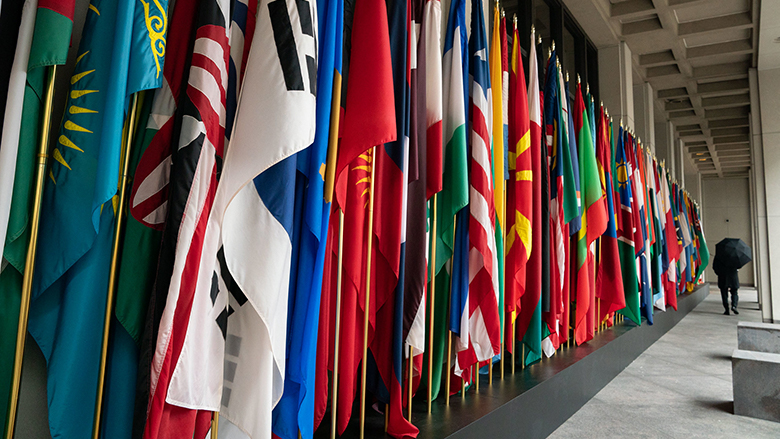Report on South Florida’s Emergence as a Hub for Conservation Technology and Sustainable Development
Executive Summary
The South Florida region, encompassing Miami-Dade and Broward counties, represents a critical nexus of ecological vulnerability and technological innovation. This report analyzes the region’s unique position as a proving ground for solutions that directly address multiple United Nations Sustainable Development Goals (SDGs). By leveraging its advanced technology sector and scientific institutions, South Florida is developing a new economic model where environmental conservation and economic resilience are mutually reinforcing, with significant implications for global sustainability challenges.
Regional Drivers for SDG-Focused Technological Advancement
South Florida’s concentration of environmental challenges and robust institutional capacity creates a unique environment for advancing the 2030 Agenda for Sustainable Development.
Geographic and Ecological Imperatives
- Climate Action (SDG 13): The region faces direct threats from sea-level rise, increased storm intensity, and saltwater intrusion, making it a natural laboratory for climate adaptation and mitigation technologies.
- Life Below Water (SDG 14) & Life on Land (SDG 15): Proximity to critical ecosystems such as the Everglades, coral reefs, and mangrove forests necessitates urgent action to combat biodiversity loss, coral disease, and habitat degradation from invasive species.
Technological and Institutional Capacity
- Industry, Innovation, and Infrastructure (SDG 9): Miami’s maturing technology sector is increasingly focused on climate and ocean solutions. This innovation is supported by a dense network of scientific institutions, including the University of Miami’s Rosenstiel School, FIU’s Institute of Environment, and Zoo Miami, which facilitates rapid research-to-deployment cycles.
Civic and Governmental Support
- Sustainable Cities and Communities (SDG 11): Public awareness of climate impacts has led to strong civic and governmental support for resilience initiatives. Programs such as Miami-Dade County’s climate and water protection plans underscore a political commitment to integrating sustainability into the region’s economic identity, aligning with the goals of creating safe, resilient, and sustainable urban areas.
Key Sectors for Technological Intervention and SDG Impact
Technological innovation in South Florida is being applied across five key areas, each contributing to specific SDGs.
-
Blue Carbon Toolkit (SDG 13, SDG 14)
Startups are utilizing drones, satellite imagery, and machine learning to quantify the carbon sequestration benefits of coastal ecosystems like mangroves and seagrass. This work links ecological restoration directly to carbon markets, creating investable assets that support climate action and protect marine life.
-
Coral Reef and Marine Ecosystem Restoration (SDG 14)
Technology is scaling up coral restoration efforts through methods like micro-fragmentation and 3D-printed reef structures. Data-driven platforms and submersible drones are improving the efficiency and success of these projects, creating a model for restoring life below water that ties financial contracts to ecological performance metrics.
-
Water Intelligence and Urban Hydrology (SDG 6, SDG 11)
To ensure clean water and sanitation and build sustainable communities, networked sensors and AI-driven predictive models are being deployed to manage stormwater and canal systems. This technology allows for the early detection of nutrient pollution and harmful algal blooms, which is critical for protecting the region’s water resources.
-
Biodiversity Monitoring and Data Management (SDG 15)
Advanced monitoring techniques, including camera traps, acoustic sensors, and eDNA sampling, are generating vast amounts of biodiversity data. Integrated platforms that combine data from scientific institutions, parks, and citizen science initiatives are essential for informing land-use decisions and protecting life on land.
-
Climate-Resilient Infrastructure (SDG 9, SDG 11, SDG 13)
Nature-based solutions are being developed as a new asset class for resilient infrastructure. By quantifying the economic benefits of mangrove buffers, urban tree canopies, and dunes, fintech models are creating investment portfolios that link ecological projects to insurance and risk-reduction markets, fostering sustainable and resilient urban development.
Strategic Recommendations for Stakeholders
Guidance for Technology Founders
To maximize impact and achieve market success, entrepreneurs in the conservation tech space should:
- Collaborate directly with ecologists and public agencies to ensure solutions are field-tested and practical.
- Develop systems capable of functioning with incomplete or “messy” environmental data.
- Monetize projects by linking them to measurable outcomes such as carbon credits, risk reduction, and ESG targets.
- Focus on creating integrated ecosystems of hardware, software, and financing rather than standalone products.
- Use South Florida as a pilot location to develop solutions that can be exported to address similar global challenges.
The Role of Non-Profit Foundations (SDG 17: Partnerships for the Goals)
Non-profit foundations are crucial for fostering the partnerships necessary to achieve the SDGs. Their role includes:
- Providing early-stage, de-risking capital for pilot projects.
- Convening diverse stakeholders from government, industry, and academia.
- Ensuring that technological adoption promotes social equity and community benefits.
- Acting as stewards of the mission, maintaining transparency and focusing on measurable ecological outcomes as investment in the sector grows.
Conclusion: A Global Model for Sustainable Development
South Florida is actively transforming its significant environmental challenges into drivers of innovation. By aligning its technological sector, scientific community, and civic leadership with the Sustainable Development Goals, the region is pioneering a new economic narrative where prosperity is intrinsically linked to ecological health. This integrated approach positions South Florida to become a global hub for conservation technology, offering a scalable model for other regions facing similar climate and biodiversity crises.
Analysis of Sustainable Development Goals in the Article
1. Which SDGs are addressed or connected to the issues highlighted in the article?
The article highlights several issues and initiatives in South Florida that directly connect to a range of Sustainable Development Goals. The primary focus on leveraging technology for environmental conservation and building resilience against climate change touches upon goals related to marine and terrestrial ecosystems, climate action, sustainable urban development, and innovation.
- SDG 6: Clean Water and Sanitation: The article discusses challenges like “saltwater intrusion” and the need to protect “Bay & Water Resources.” It also points to technological solutions for water management, such as “Water Intelligence & Urban Hydrology” using sensors to detect “nutrient spikes and algal blooms.”
- SDG 9: Industry, Innovation and Infrastructure: This is a central theme, as the article describes South Florida as a “proving ground” where “technology underwrites ecological health.” It details innovations like drones, AI-driven hydrology, 3D-printed reef structures, and fintech for financing “climate-resilient infrastructure.”
- SDG 11: Sustainable Cities and Communities: The focus is on the “dynamic metro areas in Miami–Fort Lauderdale” and making them resilient to climate impacts. The article mentions “flooded streets,” the need for “resilient infrastructure,” and “urban canopies,” all of which are key components of creating sustainable and resilient cities.
- SDG 13: Climate Action: The article is framed around the “ecological urgency” of climate change, citing specific regional challenges like “sea-level rise,” “stronger storms,” and “coral bleaching.” The solutions discussed, such as “blue carbon” storage and “climate-resilient infrastructure,” are direct responses to these climate-related hazards.
- SDG 14: Life Below Water: This goal is extensively covered. The article details threats to “coral reefs and seagrass meadows along Biscayne Bay,” including “coral disease” and “fish kills.” It also describes solutions like “coral restoration,” “submersible drones expediting coral planting,” and protecting “blue carbon” ecosystems like mangroves and seagrass.
- SDG 15: Life on Land: The article addresses terrestrial ecosystems, mentioning the “Everglades,” “mangrove loss,” and the threat of “invasive species.” It also discusses using technology like “camera traps, acoustic monitoring, and eDNA sampling” to generate “biodiversity data” to guide “habitat and land-use decisions.”
- SDG 17: Partnerships for the Goals: The article emphasizes the collaborative nature of these efforts, describing an ecosystem of “startups, researchers, and mission-driven institutions.” It highlights the “unusually tight feedback loop from research to real-world pilots” involving universities, government (Mayor Daniella Levine Cava’s initiatives), and “nonprofit foundations” that “convene diverse partners” and “bridge government and private sector interests.”
2. What specific targets under those SDGs can be identified based on the article’s content?
Based on the initiatives and challenges described, several specific SDG targets can be identified:
- Target 14.2: Sustainably manage and protect marine and coastal ecosystems to avoid significant adverse impacts. The article’s entire focus on restoring and protecting “coral reefs,” “seagrass meadows,” and “mangroves” through technology directly aligns with this target. The “Blue Carbon Toolkit” and “Coral & Reef Tech” sections are prime examples.
- Target 13.1: Strengthen resilience and adaptive capacity to climate-related hazards and natural disasters in all countries. The article explicitly addresses this by discussing South Florida as a “frontline” for “sea-level rise, saltwater intrusion, stronger storms.” The development of “coastal protection, resilient infrastructure, and restoration technology” is a direct effort to strengthen adaptive capacity.
- Target 15.5: Take urgent and significant action to reduce the degradation of natural habitats, halt the loss of biodiversity and, by 2020, protect and prevent the extinction of threatened species. The section “Biodiversity Data: From Zoo to Zone” describes using technology to generate data to “guide habitat and land-use decisions,” which is a key strategy for halting biodiversity loss. The mention of Zoo Miami bridging “animal care and wild recovery” also supports this target.
- Target 11.5: Significantly reduce the number of deaths and the number of people affected and substantially decrease the direct economic losses relative to global gross domestic product caused by disasters, including water-related disasters. The article’s concern with “flooded streets” and building “resilient infrastructure” like “mangrove buffers” and “dunes” is aimed at mitigating the impacts of climate-related disasters like storms and sea-level rise in a major urban area.
- Target 9.1: Develop quality, reliable, sustainable and resilient infrastructure. The article discusses financing “nature-based solutions—mangrove buffers, dunes, urban canopies—like traditional infrastructure.” This reframing of ecological projects as a “Climate-Resilient Infrastructure as an Asset Class” directly supports this target.
- Target 17.17: Encourage and promote effective public, public-private and civil society partnerships. The article describes a collaborative ecosystem where “nonprofit foundations,” “startups,” “researchers,” and “public works teams” work together. The text states that foundations “bridge government and private sector interests,” which is the essence of this target.
3. Are there any indicators mentioned or implied in the article that can be used to measure progress towards the identified targets?
Yes, the article mentions or implies several specific indicators that can be used to measure progress:
- Carbon Sequestration Rates: In the “Blue Carbon Toolkit” section, the article mentions that startups use technology to “measure these benefits, linking restoration to carbon markets.” This implies a direct indicator: the amount of carbon stored or sequestered in restored mangrove and seagrass ecosystems.
- Coral Survivorship and Growth: The “Coral & Reef Tech” section describes “cloud platforms tracking coral survivorship and genetics” and “contracts tied to ecological performance.” This points to measurable indicators such as the survival rate of newly planted corals and the total area of restored reef showing healthy growth.
- Water Quality Metrics: The “Water Intelligence & Urban Hydrology” section discusses using “real-time analytics” to “detect nutrient spikes and algal blooms before they spread.” This suggests that progress could be measured by a reduction in the frequency, duration, and intensity of harmful algal blooms and nutrient spikes in Biscayne Bay and other water systems.
- Biodiversity Indices: The discussion on using “camera traps, acoustic monitoring, and eDNA sampling” to generate “torrents of biodiversity data” implies the use of indicators like species richness, population density of key species, and other metrics derived from this data to measure the health of local habitats.
- Economic and Financial Metrics for Resilience: The concept of “Climate-Resilient Infrastructure as an Asset Class” involves quantifying benefits like “shade, tourism, and property value.” Progress could be measured by the monetary value assigned to these co-benefits, the amount of private capital invested in these “resilience portfolios,” and potential reductions in insurance and risk costs for protected properties.
4. Table of SDGs, Targets, and Indicators
| SDGs | Targets | Indicators Identified in the Article |
|---|---|---|
| SDG 14: Life Below Water | 14.2: Sustainably manage and protect marine and coastal ecosystems. | Coral survivorship rates; Area of restored coral reef; Amount of carbon stored by restored mangroves and seagrass. |
| SDG 13: Climate Action | 13.1: Strengthen resilience and adaptive capacity to climate-related hazards. | Area of coastline protected by nature-based solutions (mangrove buffers, dunes); Investment in resilient infrastructure projects. |
| SDG 15: Life on Land | 15.5: Halt the loss of biodiversity. | Species population and diversity metrics derived from eDNA, camera traps, and acoustic monitoring. |
| SDG 11: Sustainable Cities and Communities | 11.5: Reduce the economic losses and number of people affected by disasters. | Quantified property value increase and risk reduction from nature-based solutions; Reduction in flood-related damages. |
| SDG 6: Clean Water and Sanitation | 6.3: Improve water quality by reducing pollution. | Measured reduction in the frequency and intensity of nutrient spikes and harmful algal blooms. |
| SDG 9: Industry, Innovation and Infrastructure | 9.1: Develop quality, reliable, sustainable and resilient infrastructure. | Amount of capital invested in “resilience portfolios”; Number of tech-based restoration and protection projects implemented. |
| SDG 17: Partnerships for the Goals | 17.17: Encourage and promote effective public, public-private and civil society partnerships. | Number of collaborative projects between startups, universities, government, and non-profits; Amount of funding provided by foundations to de-risk pilot projects. |
Source: communitynewspapers.com






